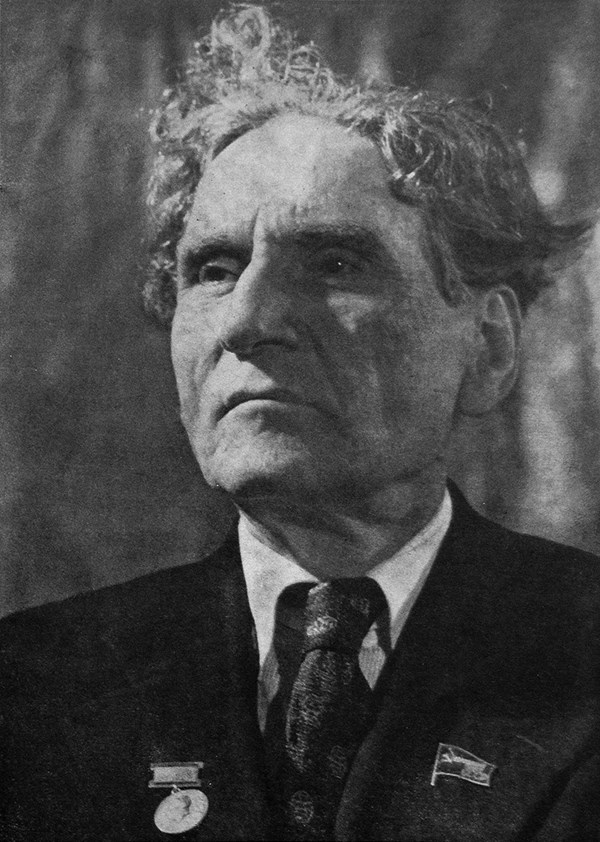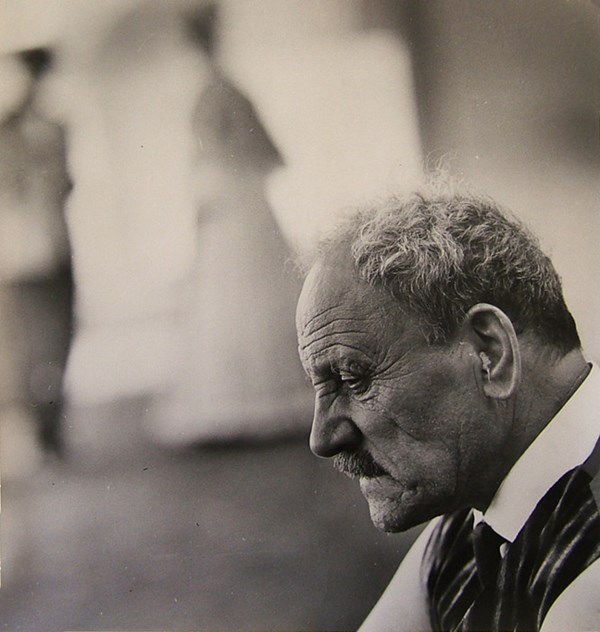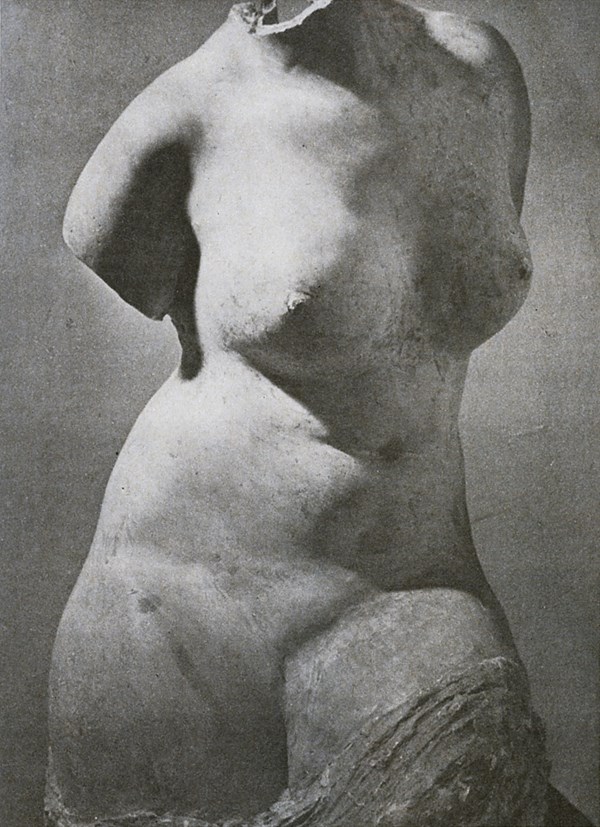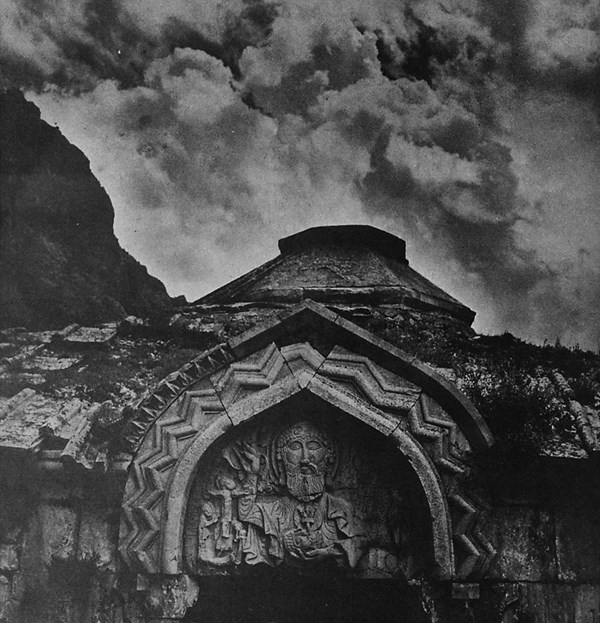Andranik Meliki Kochar (Kocharyan)
1919 - 1984
1940 - 1980s
One of the fundamental shifts in Soviet-Armenian photography occurred with the repatriation of Egyptian-born Andranik Kochar to Armenia in 1947. A child of genocide survivors, Kochar had received his secondary education at the Berberian college in Alexandria.(1) Having developed a taste for photography at a young age, he developed his skills through self-teaching and serving as a camera assistant in the ateliers of other Egyptian-Armenian photographers and in Alexandria’s film studio.(2) Kochar was able to open his own photo-studio in 1945, which closed only two years later when the photographer decided to emigrate to Soviet Armenia.
Months after arriving in Yerevan, Kochar became actively involved in the capital’s cultural scene, taking his portfolio to magazine editorials and getting a job as a camera operator at Hayfilm studios, where he later supervised the photography department.(3) In an environment where photography was primarily thought of as a technological aid for surveying, reporting and propaganda, Kochar’s aesthetic approach to the medium was not only novel, but also unrequited. Closely acquainted with both Egyptian and European models of ‘art’ photography, this was a camera artist who relied heavily on painterly allusions and metaphorical devices to show that photography was a creative, rather than a scientific representational tool. Nevertheless, his first personal exhibition organized in 1948, drew a very favorable response both from the local press and the public at large. The display of his immaculately printed black and white still-lives, landscapes and portraits, revealed to the local audiences the powerful role of aesthetics in photography. In particular, the use of unusual angles and sharp cropping as a means for uncovering new perspectives on the familiar made a strong impression on critics such as the art historian Grigor Chakhiryan. Reviewing Kochar’s show in Soviet Armenia, Chakhiryan noted that the photographer ‘does not use the photo camera to replicate painting or the graphic arts, but walks in a direction that is unique to photography… He is able to find that key point and figure out the most essential through an unexpected viewpoint on a typical detail.’(4) It is not surprising that soon after this show, Kochar began to work at the State Gallery of Armenia as a museum photographer. His artistic sensibility was so acute that even his photographs of art objects, such as Hakob Gyurdjian’s sculptures, turned into autonomous artworks themselves.
While he regularly corresponded with various press organs, such as the aforementioned ‘Soviet Armenia’ magazine, and Soviet press agencies, Kochar essentially remained an independent photographer and shied away from direct news reportage. Instead, he chose to photograph portraits, landscapes, genre scenes and the process of work. His documentation of film shoots, for example, evolved into vivid visual essays about the magic of creating the cinematic illusion. Similarly, Kochar’s numerous photographs from Armenia’s collective farms turned into operatically inspired panneaux that glorified the symbiosis of Armenia’s ancient lands and Soviet culture.
In many ways Kochar was one of the first local photographers to posit the question of what a ‘national’ photography might be in the socialist context. Developing a style of documentary photography that amalgamated the abstracting qualities of modernist art and the mytho-poetic essentialism of traditional Armenian visual culture, Kochar manages to create a prototypical model for visualizing Armenian identity, which would be closely followed by at least two succeeding generations of Soviet-Armenian photographers. This development was significantly aided by the foundation of the ‘Yerevan’ photo-club in 1962, which Kochar directed for ten years. An important gathering place for both professionals and amateurs alike, the club became a platform for debate, experiments and exhibitions that encouraged the photographers to explore avenues of individual expression and use the medium as a tool for critical or emotive reflection about the world. Notably, Kochar also wrote a number of articles about the photographic scene in the country as another means for generating discussion around the medium. Despite their muted analytical aspirations, these short reviews were a significant contribution to the rather arbitrary public perceptions of photography as an art form.(5) Kochar’s greatest impact on the evolution photographic practices in Armenia, however, was made through his numerous solo exhibitions and the carefully edited photo-essays that the photographer regularly published in republican and All-Union press between 1950s and 1980s. His meticulously finished prints established an entirely new standard for photography’s ‘artistic’ presentation while his reportages adopted approaches drawn from film montage for the construction of dynamic visual narratives.
Ultimately, what interested the artist-photographer most were the transformative capacities of photography that turned ubiquitous phenomena (in particular, landscapes and still lives) into elegies about the beauty of nature, living and creativity. This celebratory tone, which revealed the hidden elegance and unexpected poetry of even the most mundane subjects was an aspect of Kochar’s photography that successfully operated within the ideological parameters of socialist-realist idiom, while stretching it to its very limits. In this sense, Kochar’s extensive gallery of portraits depicting members of the Armenian intelligentsia was particularly audacious. Representing some of the best-known Armenian artists, writers, scholars and scientists, these photographs often sought to and usually succeeded in immortalizing the subjects as iconic images.(6) While deftly capturing the individuality of each sitter, Kochar chose to photograph these celebrated figures in alignment with visual symbols of Armenia’s history and art, thus showing his subjects as the modern links in a long chain of national cultural traditions (7). This notion was made especially explicit by the inclusion of photographs of diasporan luminaries such as Rouben Mamoulian and William Saroyan in exhibitions and publications devoted to Armenian culture. Thus, Kochar’s suite of portraits, in tandem with his extensive series devoted to Armenia’s landscape and architectural monuments, aimed to create a holistic, collective image of the nation’s spirit that continued to determine the overall trajectory of Soviet-Armenian photography until the late 1980s. This significance was widely recognised during Kochar's lifetime through numerous accolades and awards, including seven diplomas from World Press Photo. One of the main proponents of his legacy was the artist’s son, Vahan Kochar, a major photographer in his own right.
1) General biographical details have been sourced from Vahan Kochar, Hay Lusankarichner [Armenian Photographers, in Armenian], self-published, Yerevan, 2007, pp.418-435
2) According to information relayed verbally by the photographer’s son, Vahan Kochar, Andranik was briefly an assistant to Aram Alban.
3) H. P. ‘Andranik Kochari Foto Natyurmortnery’ [‘Andranik Kochar’s Photo Still-lives’, in Armenian], no. 1, Sovetakan Hayastan, 1954, p.22
4) Grigor Chakhiryan, ‘Andranik Kochari Fotogortseri Tsutsahandesy’ [‘The Exhibition of Andranik Kochar’s Photo-Works’, in Armenian], no. 12, Sovetakan Hayastan, 1948, pp.41-42
5) See for example Kochar’s review of Yuri Levin’s work in Kochar, Andranik. ‘Khosum en Yuri Levini Gortsery’ [‘Yuri Levin's Works Speak’, in Armenian], Garun, no.7, 1967, pp.66-70
6) Kochar’s portrait of Avetik Ishakyan, among others, was turned into a stamp.
7) see for example his portraits of Mariam Aslamyan and Martiros Saryan.
Nationality
Egyptian, Armenian
Region
Egypt, USSR, Armenia, ArmSSR
City
Alexandria, Yerevan
Activity
artistic, studio, documentary, photo correspondent
Media
analogue photography
Bibliography
Apinyan, A. 'Mardy vor Hrashkner e Gortsum' ['Man who Creates Miracles', in Armenian], Hayastani Hanrapetutyun, 29.09.1994
Chakhiryan, Grigor. ‘Andranik Kochari Fotogortseri Tsutsahandesy’ [‘The Exhibition of Andranik Kochar’s Photo-Works’, in Armenian], no. 12, Sovetakan Hayastan, 1948, pp.41-42
H. P. ‘Andranik Kochari Foto Natyurmortnery’ [‘Andranik Kochar’s Photo Still-lives’, in Armenian], no. 1, Sovetakan Hayastan, 1954, p.22
Kochar, Andranik. ‘Khosum en Yuri Levini Gortsery’ [‘Yuri Levin's Works Speak’, in Armenian], Garun, no.7, 1967, pp.66-70
Kochar, Andranik and Martin Mikaelyan (intro.). Vive la Cinema, Ti So Graphics, Yerevan, 2006
Kochar, Vahan. Hay Lusankarichner[Armenian Photographers, in Armenian], self-published, Yerevan, 2007, pp.418-435
Parsamyan, A. 'Lusankarchi Ashharhy', ['The World of the Photographer', in Armenian], Hayreniki Dzayn, 20.10.1971
Zaryan, Ruben. 'Andranik Kochar' [in Russian], Literaturnaya Armenia, no. 8(?), 1975, pp.96-98
Exhibitions
1948: Solo exhibition, House of art worker, Yerevan
1956: Solo exhibition, Yerevan
1957: Solo exhibition, Yerevan
1959: Solo exhibition, Yerevan
1960: Solo exhibition, Riga
1961: Solo exhibition, Leningrad
1964: Solo exhibition, Yerevan
1965: Solo exhibition, Moscow
1972: Solo exhibition, Yerevan
1974: Solo exhibition, Yerevan
1977: Solo exhibition, Moscow
1979: Solo exhibition, Yerevan
1988: Solo exhibition, Zaporozhye
1989: Solo exhibition, Dnepropetrosvk
Collections
Lusadaran Armenian Photography Foundation, Yerevan



